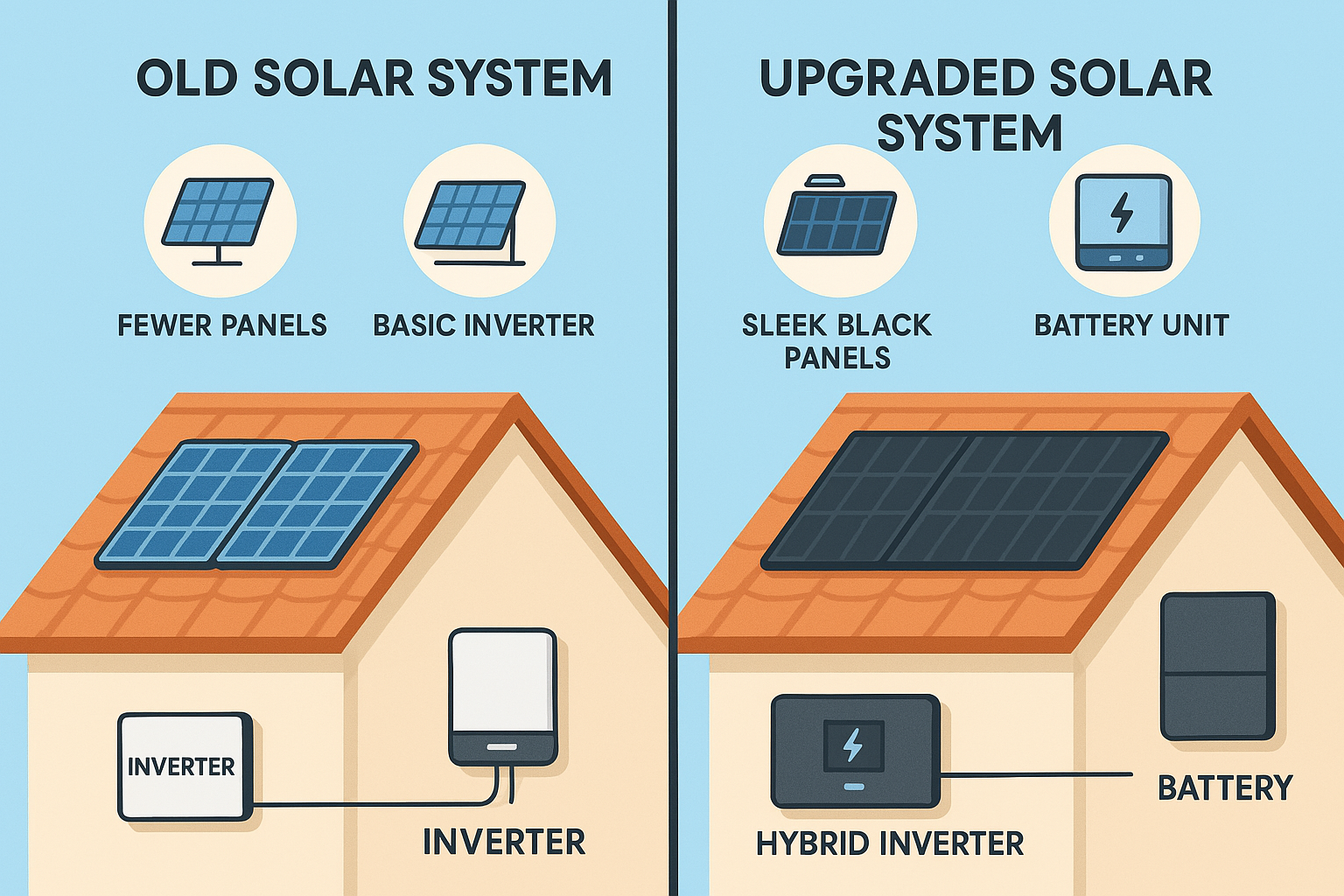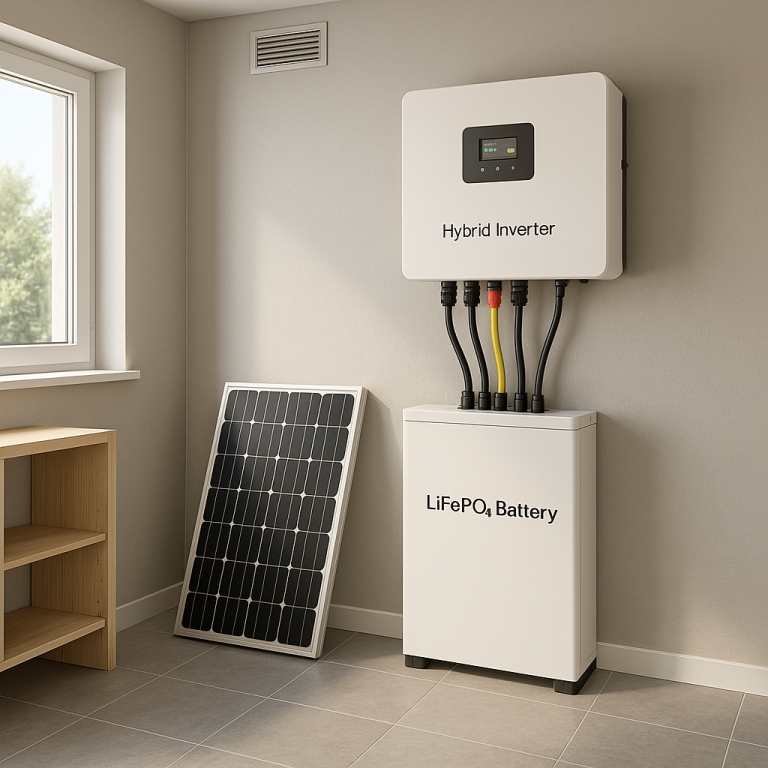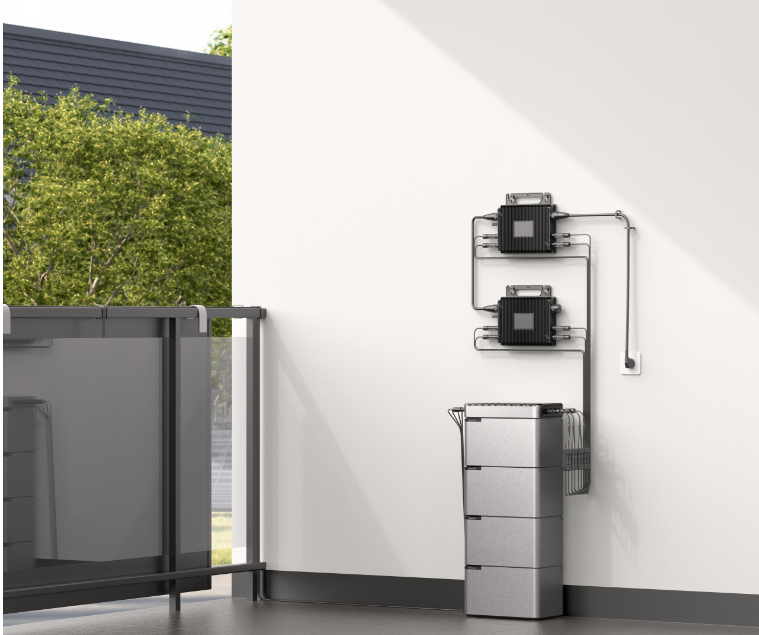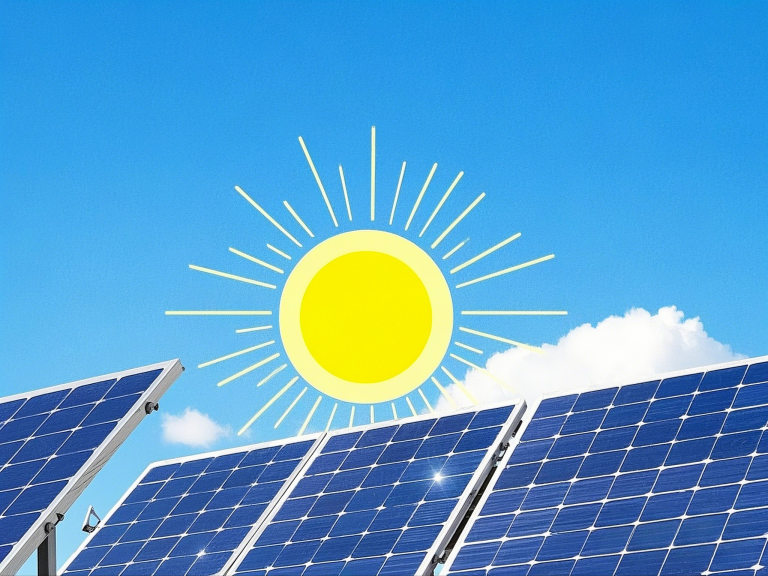1. Signs It’s Time to Upgrade
Here are common signs that indicate your solar system might need an upgrade:
✅ A. Rising Electricity Bills
Despite having solar, your electricity costs are increasing — this may mean your system isn’t meeting current energy demands.
✅ B. Outdated Technology
If your panels or inverters are over 10 years old, they likely lack the efficiency and features of modern systems.
✅ C. No Battery Storage
Modern systems include LiFePO₄ battery storage, enabling night-time use and backup during outages.
✅ D. System Undersized
Your lifestyle or business may have changed (e.g., added EV charging), and your solar system is no longer sufficient.

2. Common Upgrade Options
Upgrading doesn’t always mean replacing everything. Here are 4 popular upgrade strategies:
🔁 1. Add More Panels
Increase system capacity by adding new, more efficient solar modules.
🔋 2. Add Battery Storage
Install LiFePO₄ or lithium-ion batteries to store excess daytime power for night use.
🔄 3. Replace the Inverter
Old inverters can be replaced with hybrid models that support batteries and smart grid integration.
🔧 4. Add Smart Monitoring
Add an energy management system or app to track production, consumption, and battery level in real time.
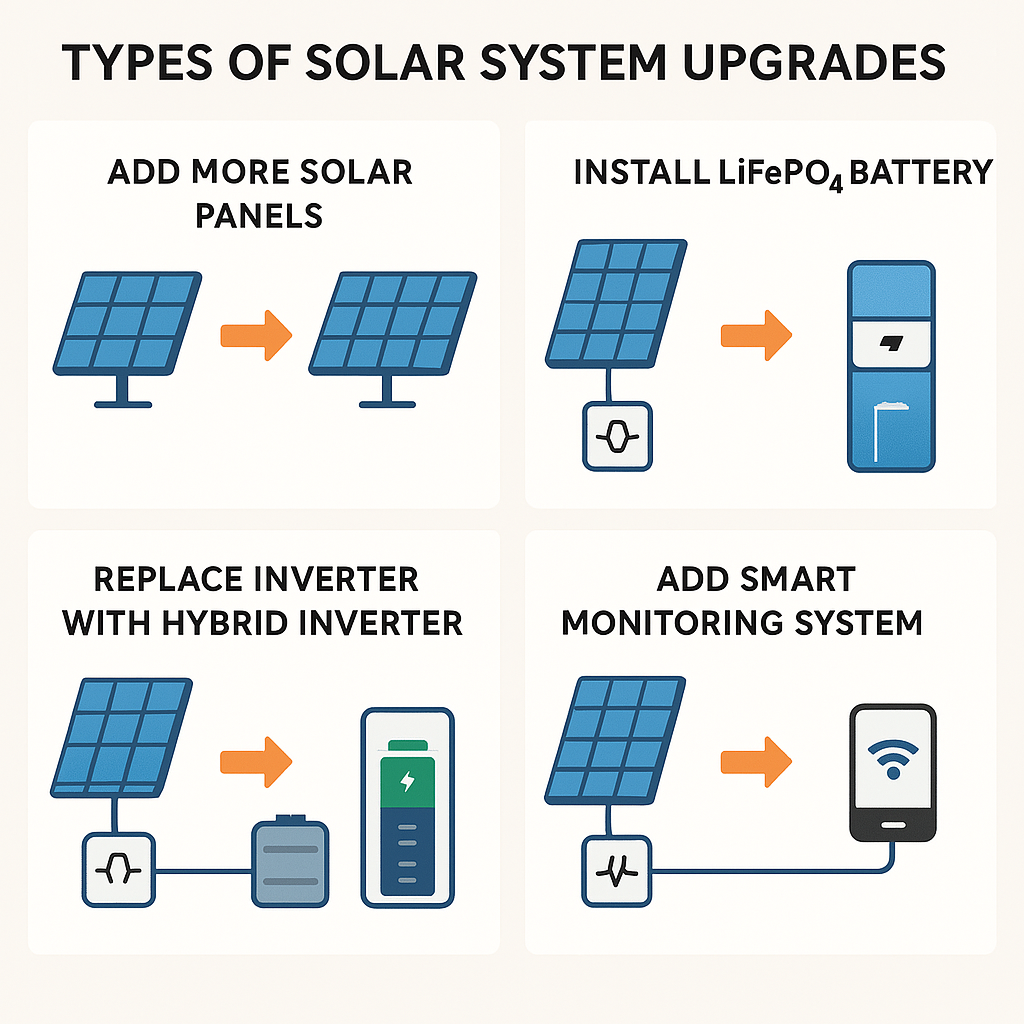
3. Technical Considerations Before Upgrading
🧩 System Compatibility
Will new components (panels, inverters) be compatible with your existing system?
🧠 Smart Integration
Ensure new components support app integration, energy automation, and possibly V2G (Vehicle to Grid) in the future.
🧯 Safety and Wiring
Upgrading often involves rewiring or upgrading circuit protection — ensure compliance with local codes.

4. What’s the ROI on Upgrading?
Depending on upgrade type and usage habits, most solar system upgrades can pay for themselves within 3–7 years.
| Upgrade Type | Approx. ROI Time | Added Benefit |
|---|---|---|
| Add Panels | 3–5 years | Lower bills, more green power |
| Add Battery | 4–6 years | Backup power, time-of-use saving |
| Replace Inverter | 5–7 years | Efficiency + smart features |
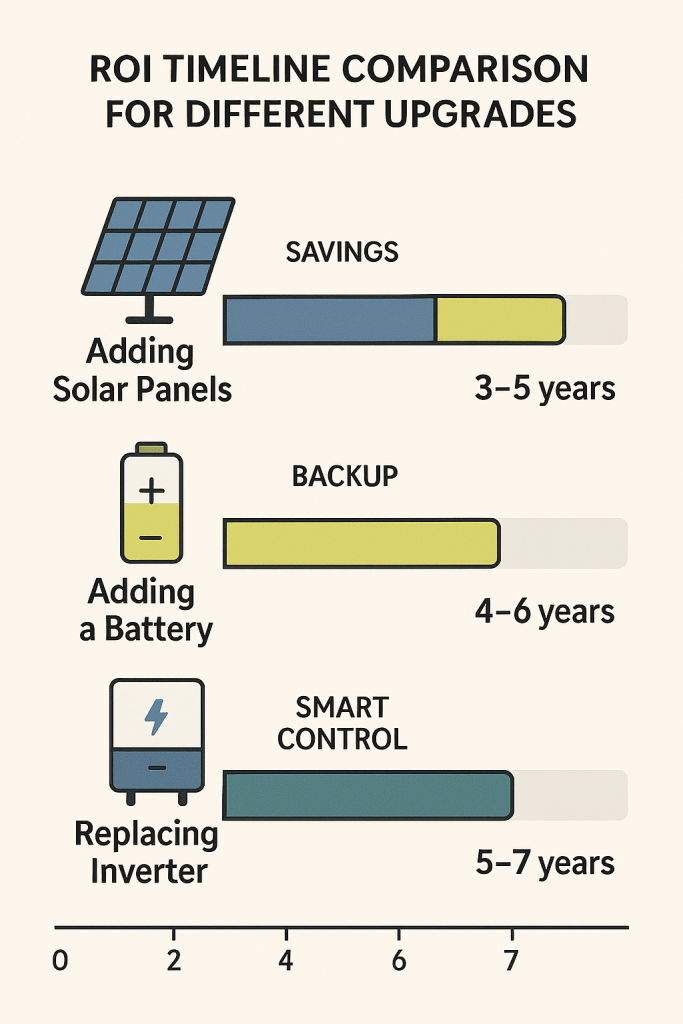
5. Professional Help: Yes or No?
Yes — in most cases, system upgrades should be done by licensed installers. They can:
• Perform compatibility and safety checks
• Handle permits and grid connection
• Ensure warranties remain valid
• Provide after-sales service

Conclusion: Upgrade Smart, Not Blindly
Whether you’re looking to boost your solar capacity, add backup power, or simply modernize your system, solar upgrades are a smart move in 2024 — especially as electricity costs rise and battery prices fall. Always assess your real needs, consult a professional, and invest with a long-term mindset.

